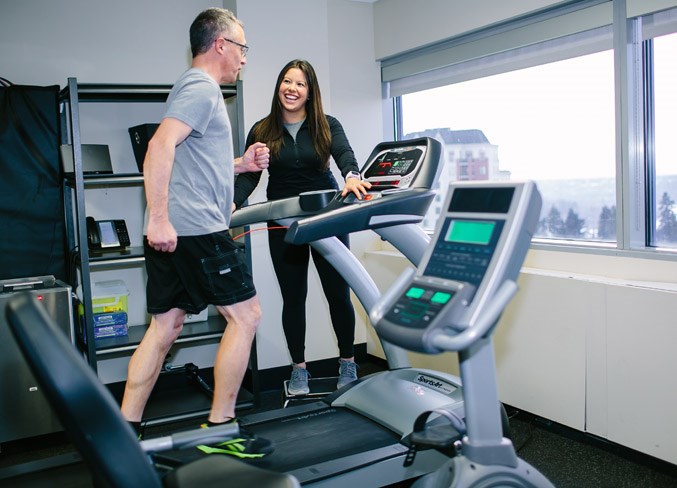What’s really stopping you from achieving the results you want? To make a real change, you need to make choices and find a routine that works with your busy lifestyle.
This four-step, honest approach is designed to help you set and achieve realistic health goals. It will help you reassess your priorities; consider any modifications; and keep you motivated throughout life’s inevitable ups and downs.
Step One: Understand Your Priorities When Setting Goals
You’ve probably been told in the past to set SMART (specific, measurable, achievable, relevant, time-bound) goals. But surprisingly, this approach rarely works for fitness. Why? The problem lies in prioritization.Consider this SMART goal: I want to lose 8 pounds in two months by running/ walking/biking at least four times a week and limiting processed food intake to the weekends. By textbook standards, it’s a great goal, but it skips one critical step — it doesn’t consider your other priorities in life.
If you’re the owner of a company with 200 employees; highly involved in your community; have young children; and travel several times a month for work, your priorities might look like this: 1. Responsibility to your business 2. Family time 3. Contribution to society 4. Health and fitness
Accepting that fitness is not your top priority doesn’t mean abandoning your goal altogether, but it may mean revising it. And that’s okay. Any step in the right direction is a good one.
Step Two: Find the Tips & Tricks That Work for You
Once you’ve set a realistic goal, you need to find ways to achieve it. Choose the right activity. Find something that works with your schedule and fitness level. Ask yourself (and answer honestly):- Is this something you enjoy?
- How often can you do it?
- How hard should you push yourself?
- Have you built in rest between workouts?
- Do you need help from a health and fitness professional, for technique, ideas, or simply accountability?
Make healthy nutrition choices that support your goals and priorities. Beyond exercise, what you eat affects your results. Consider engaging a dietitian for guidance; otherwise, keep these tips in mind:
- Fuel up: Eat one or two hours before exercising and again 30 minutes to an hour after your workout. Avoid proteins and fats before exercising — save them for afterwards.
- Stay strong: Get enough protein throughout the day to build muscle and feel satiated.
- Feel balanced: Tune into what your body needs — don’t overeat just because you exercised.
- Limit alcohol: Reducing alcohol consumption is an excellent way to improve results. You’ll feel less tired, more hydrated and reduce belly fat.
Step Three: Stay Accountable, Stay Motivated
Even with a routine in place, it can be hard to stay motivated. Here are some tips to stay accountable.- Buddy up: Competition can push you past your comfort zone. Try creating a friendly competition with friends or coworkers, such as a monthly squat challenge or a lunchtime basketball tournament.
- Tie in your interests: Combine the things you enjoy with your health and fitness routine. If you love spending time with your kids and want to try a new activity, bring them along and try it together. Always traveling for work? Challenge yourself to come up with one new exercise at every hotel you stay at.
- Consider external motivation: Intrinsic motivation is when you are motivated to perform an activity for its own sake and personal rewards. Extrinsic motivation is when you are motivated to avoid consequences or earn a reward. The latter is often viewed negatively, but it can be extremely useful to change bad habits. For example, if you had to give $5 to a colleague every time you skipped the gym for happy-hour, you might avoid this behavior and break the habit.
Step Four: No more excuse
Nike says it best…Just do it!Copeman Healthcare knows that optimizing your health takes a team of professionals. Our kinesiologists work with the care team to deliver movement and fitness programs suited to each client’s lifestyle and preferences. For more guidance on goal setting, finding your motivation, or integrating more fitness into your healthcare plan, contact Treena Popowich at 587-805-3930 or email [email protected]
Mélanie Portal, Registered Kinesiologist, BCAK

